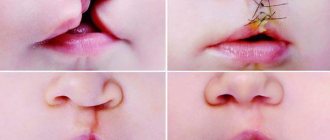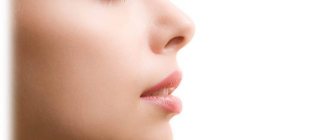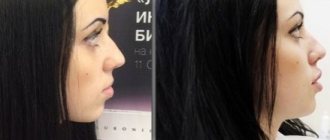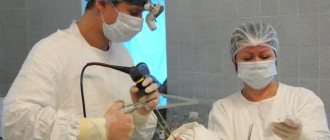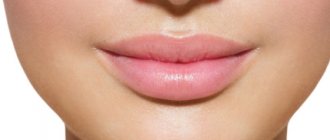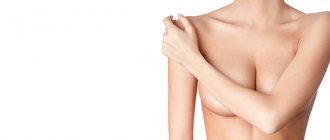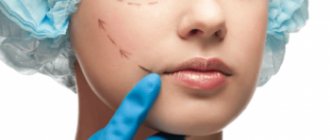Rhinoplasty begins with creating access from the external tissues of the nose to the internal ones. It can be open or closed.
I, like the vast majority of my colleagues from leading clinics in Europe and America, prefer open rhinoplasty: it provides a lot of opportunities and gives a predictable, lasting, impeccable result that meets the patient’s expectations.
The only downside to open rhinoplasty is the incision that is made on the outside of the nose. But is it really that scary?
The essence and types of rhinoplasty
Rhinoplasty can be performed for both aesthetic and functional reasons.
- Combining nasal reshaping with septoplasty can effectively treat certain breathing problems.
- Rhinoseptoplasty is also a reconstructive surgery aimed at correcting a birth defect or injury, such as a broken nose.
- It is performed under intravenous sedation or general anesthesia.
The following techniques are used when performing the operation
- In closed rhinoplasty, incisions are made in the nostrils.
- In open rhinoplasty, an additional small incision is made through the columella, the tissue bridge between the nostrils.
- Both techniques gently mobilize the soft tissue covering the nose. Next, we work with cartilage and bone tissue to obtain the desired shape and size of the nose. If necessary, cartilage tissue is taken from the nasal septum, or in cases of revision, cartilage from the ear or rib may be required. If nasal breathing is difficult, septoplasty is performed to improve breathing. The fabrics are then re-draped and covered. The operation usually lasts two to three hours.
What is conservation rhinoplasty?
In most cases, when patients contact a plastic surgeon for rhinoplasty, the number one problem is the presence of a nasal hump . Therefore, reducing the nasal hump is an important surgical step in rhinoplasty. In classical rhinoplasty, after reducing the height of the dorsum, the nasal arch is destroyed and must be reconstructed. For the past few years, this technique has been a standard procedure used by surgeons to remove the hump and reshape the nose. The bony hump was removed using an osteotome and hammer and then removed, resulting in an open roof of the nasal dorsum, which had to be reconstructed using cartilage grafts and sutures.
Think of the nose as a multi-story building with the top floor being the hump. In standard rhinoplasty, the surgeon removes the top floor or hump to reduce the size of the building. This method leaves the roof exposed, which will then need to be repaired.
How to care for scars?
Proper care of scars helps make them less noticeable or even invisible to others. This helps prevent the appearance of a scar that will be impossible to remove without surgery.
For the first two weeks, any scar must be treated with special solutions, ointments and creams that prevent the occurrence of inflammatory processes.
A classic example of such treatment: wipe the seam with vodka. Please note, it is vodka, not alcohol. Otherwise, you can get the opposite effect.
When the edges of the wound tighten and the crust comes off, you need to continue caring for the seam. This should be done to reduce the process of tissue scarring. What does this care include? Usually, the doctor prescribes the use of special medications for non-surgical treatment. These may be ointments, gels or patches to remodel scars or prevent their formation. These products must be used exactly as prescribed by your doctor. All this is done so that the scars dissolve faster and acquire a normal skin color.
Treatment usually lasts approximately 12 weeks. That's how long it takes to see the end result.
Additional non-surgical treatments:
- To keep scars flush with the skin, chemical peeling procedures are often used.
- To reduce the density of the scar, phonophoresis is used.
- Treatment with corticosteroids is used to treat keloid scars. The technique involves local injections aimed at reducing collagen synthesis. Scar injections are given no more often than once every 1-1.5 months.
- To remove or make an old scar less noticeable, laser resurfacing is often used. To obtain a visible result, several sessions of laser treatment of the problem area are performed. The technique has its contraindications. Therefore, a mandatory consultation with your doctor is required.
Surgical methods for removing scars and scars.
In cases where non-surgical methods for removing scars are powerless, surgical methods are often resorted to. In most cases, they involve removing scar tissue and replacing it with healthy skin.
Using the operation you can:
- reduce the width of the scar,
- smooth the surface of the skin,
- move the scar to an area less noticeable to others, etc.
At the same time, surgeons always try:
- do not injure the surgical site too much,
- when sutures are placed, do not allow tissue tension,
- make incisions only at right angles in order to achieve maximum convergence of healthy tissue during healing.
Benefits of conservation rhinoplasty
- With the Preservation Rhinoplasty technique, there is no need to destroy or reconstruct the back or roof during surgery . The height is changed by removing the lower floors of the building in this design, so the nose becomes smaller, the hump disappears, and the roof of the upper floor remains intact.
- With this approach, the bridge of the nose remains natural. The bones and cartilaginous structures that form the bridge of the nose are preserved. Excess cartilage and bone fragments are removed only from certain areas of the nose, allowing the bridge of the nose to be pressed inward. Thus, the normal anatomy of the bony part of the back is preserved and a natural result is achieved without traces of aesthetic surgery.
- Light and shadow reflected from the bridge maintain attractive lines and provide a natural bridge to the nose.
- Conserving rhinoplasty poses a lower risk of breathing problems after surgery. In traditional rhinoplasty, some of the functional structures of the nose that are essential for proper breathing are destroyed and need to be reconstructed.
- Incomplete or incorrect reconstruction during traditional rhinoplasty can lead to long-term breathing problems. Conservative rhinoplasty preserves these nasal structures so that there is no need for reconstruction during surgery.
- An additional feature of conservation rhinoplasty is that it is performed in a different plane of dissection than traditional rhinoplasty. Dissection is carried out in the subperichondrial and subperiosteal planes. The significance of this is that the soft tissues of the nose (which carry blood vessels and lymph nodes) are not damaged or destroyed. Maintaining intact blood vessels and lymph nodes results in minimal swelling and bruising, resulting in a significantly faster recovery than traditional rhinoplasty.
- With conservation rhinoplasty, the risk of bleeding after surgery is reduced, meaning that air ducts inserted into the nose allow the patient to breathe immediately.
- This technique is less invasive and traumatic for the patient. Preserving the back, while promoting a more natural-looking result, also avoids secondary deformities that sometimes lead to the need for revision surgery.
- The rehabilitation period is faster and patients can quickly return to their normal lifestyle.
Piezorrhinoplasty
Piezo is a system that converts electrical energy into ultrasound, allowing the surgeon to truly “sculpt” the nasal bones, changing their shape and thickness as needed, and even trimming them if necessary, without causing problems to other sensitive tissues of the nose.
Piezo uses ultrasonic vibrations at a frequency of 25-29 kHz to change the shape of bone, while leaving all soft tissues affected by frequencies above 50 kHz, such as skin, mucous membranes, blood vessels and nerves, completely intact.
Piezo technology has been known for several years and is mainly used in dentistry with excellent results in the treatment of the upper and lower jaw.
In traditional rhinoplasty, surgical instruments known as rasps and osteotomes (hammer and chisel) are used to reshape the nasal bones by removing the hump and narrowing the width of the nasal bone. These tools are relatively imprecise and their use can result in uneven contours if not used properly.
Recently, a technology has been developed that uses ultrasonic waves to precisely influence bone tissue and is much less traumatic compared to traditional methods.
Ultrasound or piezo rhinoplasty is currently the most advanced technique available for minimally traumatic nasal bone reshaping and hump removal during rhinoplasty.
The ultrasound rhinoplasty technique differs from the traditional one.
- A complete detachment of the soft tissue over the bony surface is required, allowing the entire architecture of the nasal bone to be seen.
- The ultrasonic pen can be equipped with a variety of tips that can remove hump, polish any rough surfaces, make precise bone cuts that do not damage the underlying mucosa.
As a result, an attractive aesthetic result can be achieved with much less trauma, less swelling and almost no bruising.
Benefits of piezorhinoplasty
- Reducing the level of soft tissue trauma to a minimum. Therefore, bruising and swelling are practically absent.
- Controlled cuts create clean, even lines.
- Prevents uncontrolled bone fractures unlike osteotomy techniques. Thus, it prevents deformations and unevenness.
- Post-operative recovery is faster because it does not cause damage to soft tissue, surrounding blood vessels and cartilage, so patients can return to their daily lives more quickly. Postoperative pain is also usually less.
- The accuracy of reshaping the nasal bones is higher, which leads to increased patient satisfaction.
- The incidence of complications after rhinoplasty and the need for revision surgery is reduced.
You can't fool your nose! 14 myths about rhinoplasty that it’s time to talk frankly about
According to statistics, more than 70% of people are dissatisfied with the shape of their nose. But not everyone decides to go under the plastic surgeon’s knife for an upgrade. The reason for this is fears based on rumors. We decided that we should stop being led by myths by the nose. It's time to set the record straight!
Hayk Babayan, leading plastic surgeon at the Sharm Gold plastic surgery clinic
Otari Gogiberidze, leading plastic surgeon at the aesthetic medicine clinic “Time of Beauty”
You thought: you can shape any nose shape.
Actually
it is, but is it necessary? Everything in appearance should be harmonious, so it is better to focus on the individual features of the facial structure of each patient. “A nose that is too small (which has become a trend today) is unlikely to be appropriate in the company of large facial features,” notes Hayk Babayan, leading plastic surgeon at the Sharm Gold plastic surgery clinic. - In addition, the choice of the future nose in some cases depends on the type of skin. If the skin is too porous, oily, or thick, I would not recommend reducing the nose to a critical minimum.” The shape of the face also matters. “If it is oval or elongated, thin, then with a high hump it is undesirable to make the nose with a strong deflection. A higher, smoother, neater back would be more appropriate here,” explains Otari Gogiberidze, the leading plastic surgeon at the “Time of Beauty” aesthetic medicine clinic. - And if a girl has cheeks, then a slightly upturned nose will be just right. We always discuss in detail with the patient both her wishes and my vision as a specialist in order to find the best option.”
You thought: rhinoplasty only makes the nose smaller.
In fact,
they mainly reduce, but not only. Of course, there are many more requests to remove the hump, narrow the wings, and make the tip section more elegant. But there are also the opposite wishes, for example, to lengthen the back, make it higher (popular among people of the Asian race). “In augmentation operations, a person’s own cartilage is used,” says Hayk Babayan. - They are mainly taken from the septum, ribs and ears. It’s very important to calculate all the proportions here; if the nose is raised high, it can become too short.”
You thought: a partially or completely lost nose cannot be restored.
In fact,
reconstructive rhinoplasty has been successfully used in medicine for a long time. Unfortunately, there are serious injuries (accident, burn, dog bite) that require the nose to be reassembled. “I was engaged in purely maxillofacial surgery, and in my practice there were many similar cases,” says Otari Gogiberidze. “For example, there was a patient with a chemical burn to her face, whose entire tip of her nose was affected. We performed an operation on her by transferring a flap from the cheek area, essentially recreating the tip of her nose by placing an allograft (we no longer used her own cartilage). Afterwards, a small corrective operation was performed, and in the end the patient was satisfied with everything. The only thing is that the tip of the nose was different in color, but this can be hidden with decorative cosmetics.
Now, to be honest, I try not to carry out such operations. And patients with severe injuries, as a rule, first turn to maxillofacial surgeons, and after some time they come to aesthetic surgeons.”
You thought: a plastic surgeon is only responsible for the appearance, and not for the health of the nose.
Actually
this is not true. These combined operations are called rhinoseptoplasty. It happens that inexperienced plastic surgeons who do not understand ENT pathology call an ENT specialist for help and perform the operation together with him. But here both our experts are categorical: they consider it unacceptable for two specialists to share one nose. If a plastic surgeon undertakes rhinoplasty, he must know how to correct the respiratory system. “It’s the same as if you came to a tailor, and there one master takes measurements and sews sleeves, another - a vest, and a third cuts a jacket,” plastic surgeon Otari Gogiberidze throws up his hands. “But if for some reason you don’t trust your surgeon, then, of course, it’s better to start by eliminating ENT pathology, and then go for plastic surgery.”
You thought: plastic surgery solves not only the problem of aesthetics, but also snoring.
In fact,
this is an absolute myth. Snoring is the sagging and vibration of the soft palate. This often happens with weight gain and age-related changes in the bite, then at certain positions of the head in sleep a person snores. All this is the responsibility of the ENT doctor, and not the plastic surgeon.
You thought: it is better to have surgery in the cold season.
In fact,
“There is no logical explanation for this statement,” answers Hayk Babayan. - If this were so, then California would not have the status of the capital of plastic surgery. Or take Brazil, which also breaks the record for plastic. After all, in these countries it is summer all year round. The operation does not depend on the time of year, period!”
You thought: during bone crushing you can get a brain injury.
In fact,
“Such a development of events is absolutely excluded,” reassures Gayk Babayan. — Firstly, during osteotomy (bone crushing), the surgeon uses minimal force. The nasal bone is a 1mm thick plate and does not require high impact force. Secondly, modern instruments allow such manipulations to be carried out accurately and quickly. Therefore, there is no reason to worry about a concussion or other injuries.”
You thought: you can’t wear glasses for the first time after rhinoplasty.
In fact,
there are nuances here. Some surgeons put a taboo on glasses for six months, others are sure that even during the rehabilitation period, the frames do not have any effect on the operated nose, however, with one caveat: they are allowed to be worn no earlier than the third or fourth week after rhinoplasty. The frame can indeed leave a temporary dent, but these marks appear only due to tissue swelling. After a light smoothing massage, everything returns to normal. Glasses cannot damage the partition itself in any way.
You thought: a plaster splint is archaic.
In fact,
this statement is baseless. “After rhinoplasty, a splint - plaster, plastic, metal-plastic, whatever - is placed in any case,” warns plastic surgeon Otari Gogiberidze. “Having tried all kinds of these designs, I still end up using plaster, individually made masks. I do them myself and, if necessary, correct them on the fourth beat after the operation. What is all this for? Plaster is a dense medical material that well prevents the spread of edema, fixes bone fragments and protects the nose from external influences. You should wear a plaster splint for 7 to 12 days, depending on the complexity of the operation.”
You thought: after rhinoplasty you can only sleep on your back.
In fact,
your self-preservation instinct will tell you that this is the truth. But if you forget and bury your nose in the pillow during the postoperative period (the first ten days) while sleeping, then, firstly, it will hurt, and secondly, there is a high probability that the nose will move.
You thought: complications often occur after rhinoplasty.
In fact,
“The nose has very good arterial nutrition, so surgical complications are very rare here,” reassures plastic surgeon Gayk Babayan. — But scars, contractures, and adhesions inside the nose are more likely to occur. But all this is very easy to remove in the postoperative period.”
You thought: new noses often have to be remade.
In fact,
it all depends on the surgeon and the chosen clinic. But both of our experts confirm that a very large percentage of patients come to them for revision after unsuccessful rhinoplasty in other clinics. By unsuccessful operations we mean those cases when the patient is dissatisfied with the aesthetics of his nose. Hayk Babayan explains that you can start working on mistakes already three months after the initial operation. But if the case is not critical, then there is no need to rush - the more time passes, the better. True, the percentage of predicting the result with repeated surgery will be lower. “Sometimes you sit and wait for a “fresh” nose to appear,” says Otari Gogiberidze. “Within a month, with three to ten noses a week, you may not encounter a single one that has not been previously operated on. This usually happens when patients save money or are fooled by advertising and end up getting not very high-quality work. But a good doctor will not let the patient go just like that. If there is a need for correction, he does it, the patient should be satisfied. Although there are also cases when the surgeon himself understands that it is with this particular patient that “the hand is not easy,” and then you need to confess and help the patient find another doctor. We will always help each other collectively and achieve the best possible result.”
You thought: you can do rhinoplasty until you get tired of it.
In fact,
unfortunately (or fortunately), it is impossible to operate on the nose indefinitely. Over the course of his entire life, any person can resort to rhinoplasty three or four times, no more. Otherwise, there is a high probability of malnutrition of soft tissues, and this, in turn, threatens the appearance of scars and necrosis (irreversible tissue necrosis). That is why it is better to think carefully, study the market and choose a surgeon who will transform your nose the first time. By the way, you shouldn’t do this before the age of 18; before this age, a person’s facial skeleton has not yet formed. But there is no upper limit.
You thought: it’s difficult to predict how the future nose will turn out.
In fact
, today nothing is impossible, some surgeons trust modern 3D modeling programs, others recognize only manual work, that is, the ability to draw and sculpt to simulate the desired result. Otari Gogiberidze from the Time of Beauty clinic specially took an anatomical modeling course in Austria for this purpose. “We had to, for example, touch an object with our eyes closed and then use clay to recreate it from memory (I had a 70% match). For clients, I draw and show initial versions of noses from photographs, explaining how they can be done and why.”
How to prepare for rhinoplasty
- Avoid taking medications containing aspirin or ibuprofen for two weeks before and after surgery. These medications may increase the risk of bleeding.
- Also avoid herbal remedies and dietary supplements. If you smoke, reduce the number of cigarettes you smoke or quit smoking.
- Smoking slows down the healing process after surgery and may increase the chance of developing an infection.
- Plan to take 2 weeks off.
- After surgery, you will feel better every day during the first week.
- Bruising and swelling practically disappear 10-14 days after rhinoplasty.
Natural Side Effects
Natural side effects may occur during the recovery period:
- redness;
- swelling;
- temperature;
- bruises;
- pain in the nasal passage;
- headache.
However, statistics show that side effects are observed in 10% of those treated.
Redness
The skin of the nose turns red after surgery infrequently, but a side effect cannot be excluded. The doctor warns the patient about redness during the consultation. You can predict the effect by learning about the reaction of the skin of the nose during sudden changes in temperature. Complications are likely with repeated plastic surgery .
Edema
Swelling after plastic surgery always remains. They are divided into postoperative (about ten days) and stable (up to six months). However, those around you do not see persistent swelling, since visually they do not affect the new shape of the nose. The occurrence of a side effect depends on the method and duration of the operation.
To speed up soft tissue recovery after an osteotomy (a procedure to cut through bones), the doctor applies a brace and a cold compress, and then elevates the patient's head. Homeopathic ointments will help remove swelling, but you should consult your doctor.
You can find more information about swelling after rhinoplasty here.
Temperature
How long does the temperature last? The temperature will increase after plastic surgery of the nose .
On the first or second day the indicator will not be below 37 degrees. However, elevated body degrees depend on the characteristics of the body. So, a thermometer can show from 37.5 to 38. A further increase in heat indicates an inflammatory process in the wound area. In this case, urgent consultation with a doctor is necessary! On the fifth day the indicator should settle. Doctors recommend monitoring the process and recording numbers every day.
Bruises
Bruising occurs immediately after surgery . They are local and located in the wound area. After removing the fixator, blue hematomas will become visible. Their occurrence is associated with an incorrectly placed fixing bandage. This factor causes blood clots in these areas. Homeopathic ointments will also help get rid of bruises.
Pain
Painful sensations in the nose after surgical surgery do not occur often and not in all patients. The reasons are non-compliance with the doctor’s rules or a low pain threshold.
Dull and aching pain in the first time after rhinoplasty is a common effect. Soft tissues respond to surgery in this way. How long does it hurt? This should not happen in the future healing process. If there is a stinging or piercing pain, you should consult a doctor, as damage to nerve tissue has probably occurred.
Headache
Should I worry if I have a headache? The first couple of days after rhinoplasty, headaches appear . Then the attending physician prescribes painkillers in addition to all other medications.
Rules for successful rehabilitation after rhinoplasty
After rhinoplasty, you need to spend a day in the clinic. You should stay in bed with your head elevated above your chest to reduce bleeding and swelling. Some nosebleeds are possible for a few days. Special silicone air duct plates are placed in the nose, so patients can breathe through their nose immediately after surgery. Significant bruising and swelling around the eyes is normal and usually disappears within 7-10 days after surgery.
To further reduce the chance of bleeding and swelling, take precautions for several weeks after surgery.
Precautionary measures
- Avoid strenuous exercise such as aerobics and running.
- Don't blow your nose.
- Eat high-fiber foods such as fruits and vegetables to avoid constipation.
- Avoid extreme facial expressions such as smiling or laughing.
- Brush your teeth gently to limit movement of your upper lip.
- Wear clothes that button in the front. Do not place clothing such as shirts or sweaters over your head.
Early recovery period
- You will experience nasal swelling for several weeks, then your condition will gradually improve.
- Nasal breathing may also be impaired for a few weeks, but will improve as swelling decreases.
- For a short time after surgery, patients may experience swelling, nasal pain, or a dull headache.
- Most patients take pain medication for three to four days and return to work in just over a week after surgery.
- The results of rhinoplasty gradually become apparent as time passes and swelling decreases.
- Swelling may occur occasionally in the first year after the procedure. It is usually more noticeable in the morning and disappears throughout the day.
- Contact lenses can be worn immediately after rhinoplasty, but glasses should not be worn for several months after surgery.
What determines whether scars will appear or not?
- Depending on the type of operation (closed rhinoplasty does not leave visible scars, and after open rhinoplasty there is a barely noticeable scar under the nose and in the columella area, after rhinoplasty of the wings of the nose, the scars are located at their base. After revision or reconstructive rhinoplasty, they are more noticeable, since the doctor deals with already damaged tissues).
- Depending on the thickness and type of skin (dark and thick skin is more susceptible to rough scarring).
- From the skill of the surgeon.
- Depending on the person’s age (at a more mature age, as a rule, tissues heal much slower and scars are more noticeable than at a young age).
- Depending on the individual characteristics of each patient.
